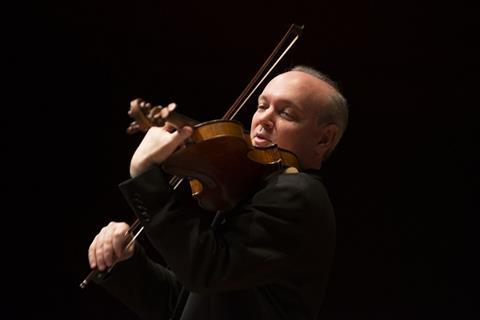Are you wasting your time? As musicians we should be doing more to question the standard warm-up and practice regimes, writes violist Paul Neubauer

Finding the most effective warm-up and practice routine is a constant challenge for string players. If you feel your routine is working perfectly, this is not the article for you. If you think you might be using your time inefficiently, read on!
Everyone has their unique way of warming up. My personal method includes various fast-finger exercises, mostly designed to highlight the tactile sensation of pressing down on the string. I know of players who feel the need to warm up for as long as an hour: for some this is an all-encompassing regime that touches on many aspects of playing; for others it is a scale and arpeggio drill that can cover all the keys.
But I question how productive these lengthy warm-ups are. A student came to me recently with a one-hour scale warm-up that she had been applying to her practice for many years. I suggested that she cut this to ten minutes per day for two weeks to see if there was any detriment to her playing. At the two-week mark she was convinced it was OK to spend the extra 50 minutes on her current repertoire.
If you spend a significant time warming up, perhaps you should try modifying this to see what happens. Perhaps there is a new path that involves different keys, different bow strokes and different rhythmic patterns that might improve your warm-up and take less time. Whether we are learning new repertoire or working on pieces familiar to us, there are many ways to approach the technical challenges, and finding the most productive use of our time is half the battle. When I am learning a new work, or I am revisiting a piece that I haven’t played in a number of years, I spend a considerable amount of time and energy comparing various bowing and fingering options that will lead, hopefully, to the most musical approach. This process also involves choices of colour, ease of execution and articulation.
In studying a new composition, perhaps in an unfamiliar musical language, I must come to terms with its structure and musical expression by examining the score. For instance, the works of Morton Feldman, John Adams, Charles Wuorinen, Oliver Knussen and Tōru Takemitsu all require individual treatments to represent their composer’s intents in the best way. I then try to get a feel for the piece by playing it through, sometimes at a slower tempo if need be, and paying special attention to any problem passages. Sometimes I’ll break these down into sections of very few notes in order to correct inaccuracies. Then I put everything back together to arrive at a more coherent sense of the whole.
I have heard musicians advocating familiarising yourself with new works by playing them very slowly many times (with or without a metronome) before adopting a normal tempo. Sometimes the emphasis is on playing without vibrato or phrasing in order to learn the repertoire. Once the piece is at a certain level from a technical standpoint, the player ‘adds the music’ or artistry. The transition to ‘musical’ version in such circumstances can be very difficult, especially if the ‘technical’ phase has been particularly lengthy.
For me, such an approach to learning is far from efficient. The slow and ‘straight’ version of the work studied during the technical phase is so far removed from the performance version that the player must essentially learn the work twice. This is not to say that slow practice is bad; rather, slow practice should be used only when needed as a learning tool, not as the generic approach to each new piece. Generally, I try to identify a work’s musical qualities from the outset.
Of course, there is no such thing as a perfect warm-up or practice regime, but I believe that all habits formed throughout our musical development deserve a second look. Ultimately, practice is highly personal and each individual must use the methods that work best for them.
Read: Violin Masterclass: Playing Thirds in Dont’s Etude op.35 no.8
Read: Varying my warm-up routine is essential for performing success, says violinist Natalia Lomeiko
Read: ‘Popper’s cello studies force you to know the fingerboard inside out’
Explore more Technique articles like this in The Strad Playing Hub











































No comments yet